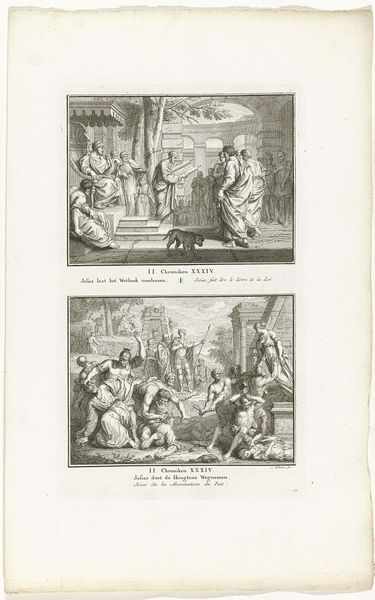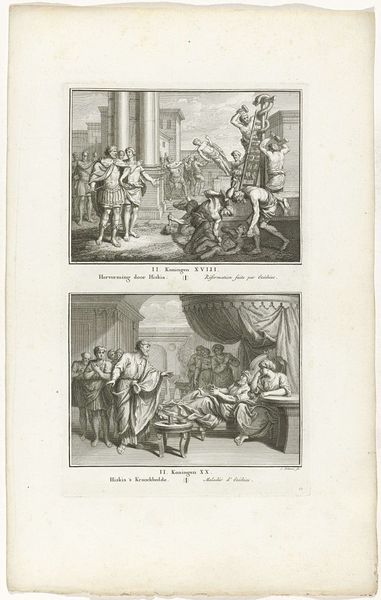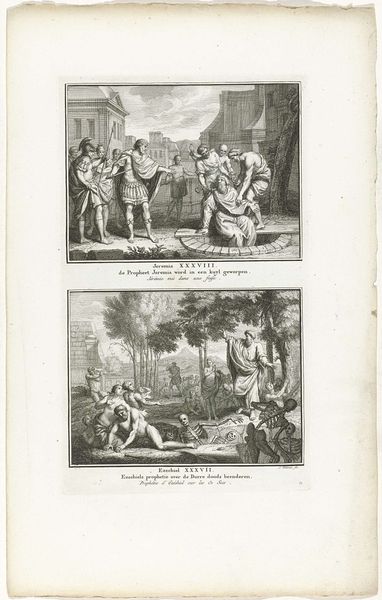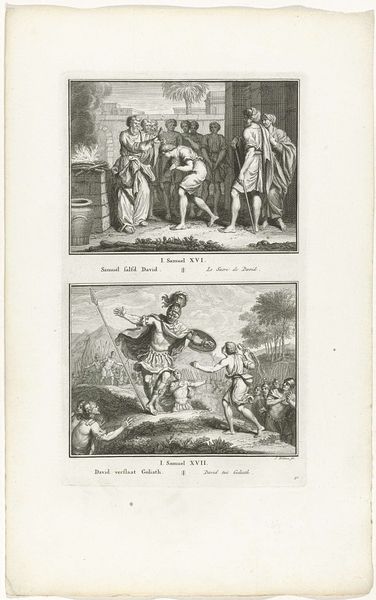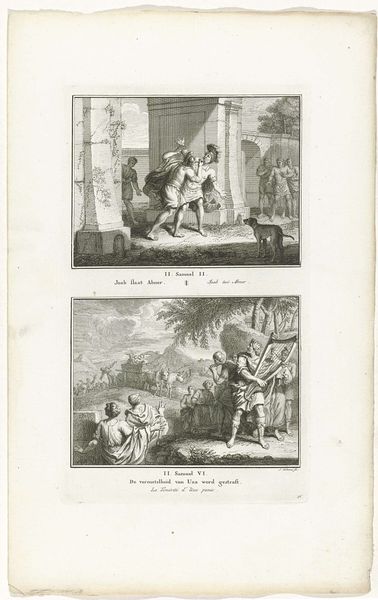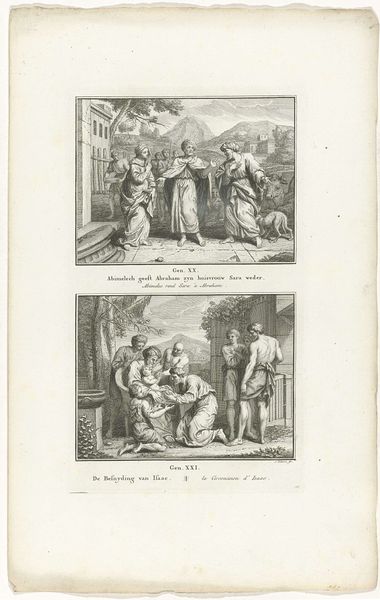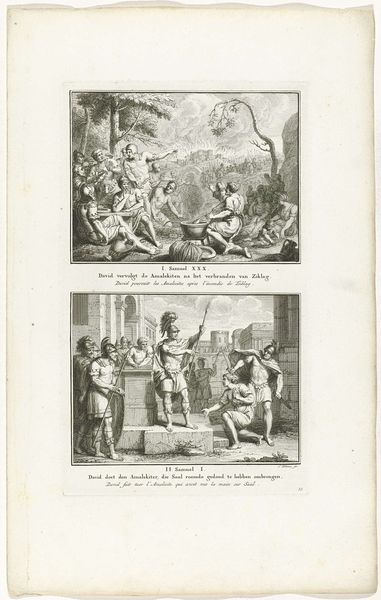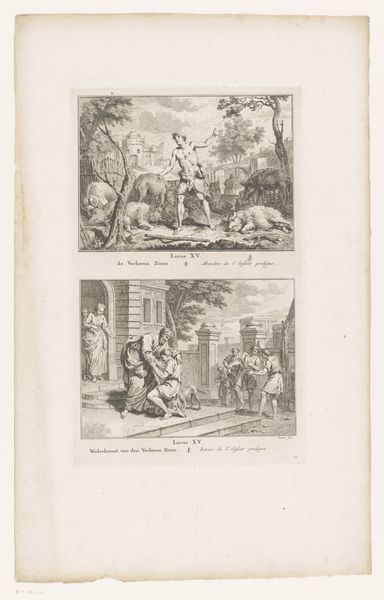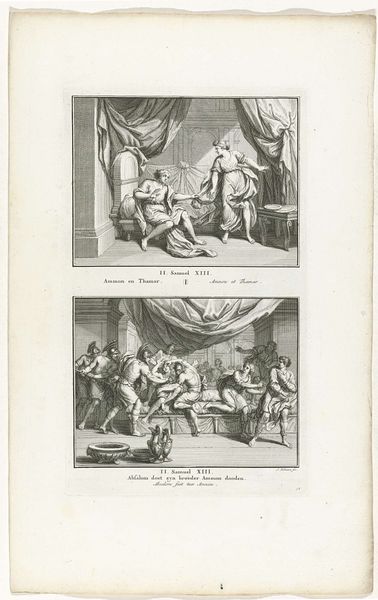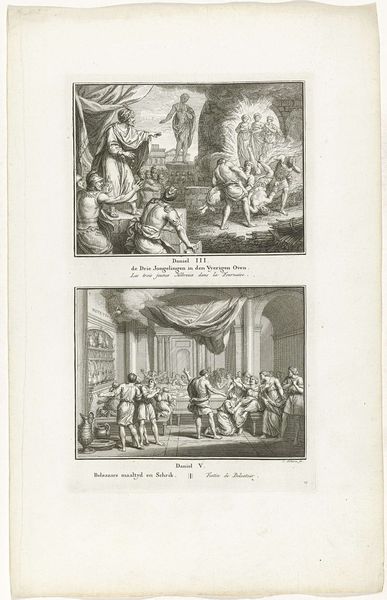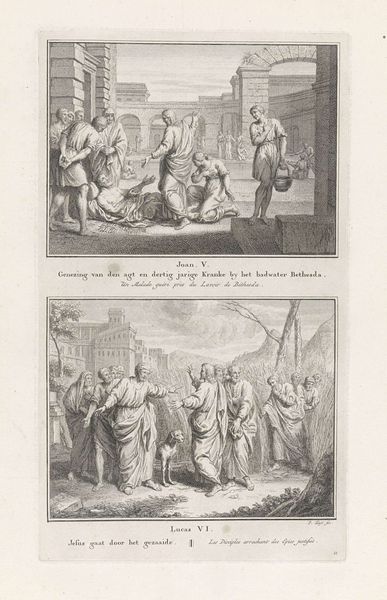
Christus en de hoofdman (centurio) uit Kafarnaüm; Christus predikt vanuit het schip 1715 - 1763
0:00
0:00
quentinpierrechedel
Rijksmuseum
Dimensions: height 310 mm, width 190 mm
Copyright: Rijks Museum: Open Domain
This engraving, made by Quentin Pierre Chedel, dates to the 18th century. The printmaking process, as seen here, involves a complex series of actions, all based on the application of force. Consider the labor involved: Chedel would have started by preparing a copper plate, meticulously polishing it to a mirror finish. He would then apply a resist, draw his composition, and use a sharp burin to physically cut lines into the metal. These lines hold the ink, which is then transferred to paper under immense pressure. The resulting image, with its crisp lines and tonal variations, is a testament to Chedel’s skill and the capabilities of the printing press. Moreover, the image itself is about the exercise of power, contrasting the imperial strength of the Roman centurion with the moral authority of Christ. By understanding the labor required for its production, we can better appreciate the social context in which this image was made and consumed.
Comments
No comments
Be the first to comment and join the conversation on the ultimate creative platform.

